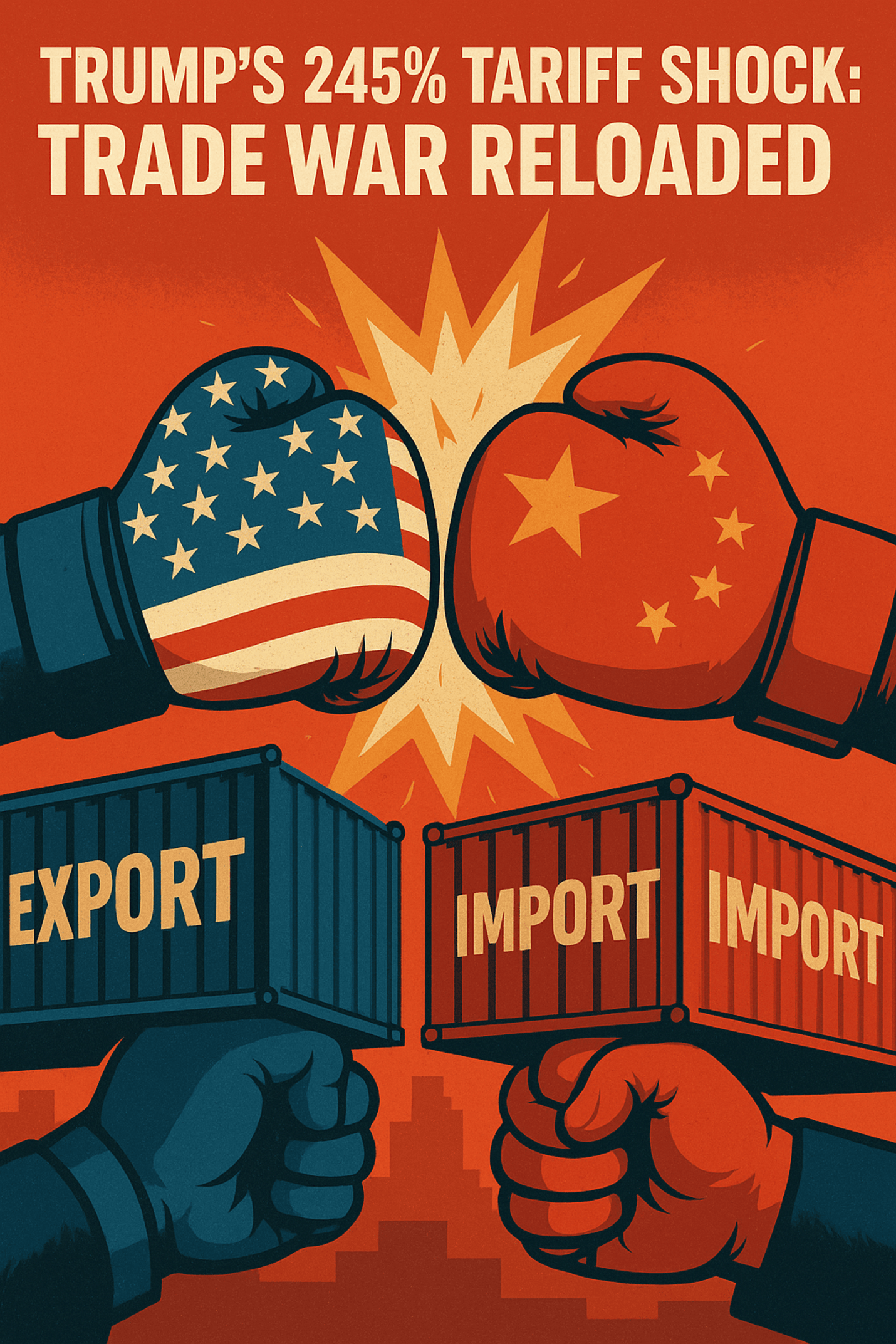Trump Tariffs Push US Inflation to Eight-Month High
Consumer prices rose 2.9% in August 2025 as new trade tariffs ripple through the economy. From clothing to home goods, households are feeling the pinch, while the Federal Reserve weighs its next move.
Inflation Accelerates Amid Trade Tensions
US consumer prices are climbing again, with inflation posting its sharpest yearly gain since January 2025. The Consumer Price Index (CPI) rose 2.9% in August, up from 2.7% in July, according to the Bureau of Labor Statistics (BLS). The uptick reflects a new factor reshaping the economic outlook: President Donald Trump’s tariffs on imports, which are beginning to feed directly into household costs.
These tariffs, aimed at protecting US manufacturers and jobs, are now reverberating through supply chains. Companies that rely on imported materials or finished goods face higher costs, and many are passing these increases directly to consumers.
Why Inflation Is Rising
Several forces are contributing to this upward shift in consumer prices:
• Tariffs on imports such as clothing, household appliances, and electronics are increasing costs for businesses.
• Price pass-through to shoppers is evident as companies raise retail prices to maintain margins.
• Core goods prices (excluding volatile food and energy) climbed 1.5% year-on-year, the fastest pace since mid-2023.
• Household essentials, apparel, and recreational goods are consistently seeing price hikes.
• Public perception is shifting: a CBS News poll shows that two-thirds of Americans feel prices are rising again, with clothing singled out as the most noticeable increase.
The data underscores a classic challenge of tariff-driven inflation: what protects domestic producers in the short run often reduces consumer purchasing power.
The Federal Reserve’s Delicate Balancing Act
Even before the tariff effect, the Fed was leaning toward cutting interest rates to support economic growth. But the recent inflation uptick complicates that plan.
• Chairman Jerome Powell has acknowledged that tariffs are contributing to price pressures.
• While rate cuts are still expected, Powell has signaled the Fed won’t move aggressively if inflation remains sticky.
• Markets are now bracing for a slower, more cautious easing cycle than investors had hoped.
The Fed faces a dilemma: move too quickly with rate cuts, and it risks fueling further inflation. Wait too long, and it could dampen growth and consumer demand.
Sectoral and Market Impacts
The inflation surge is not uniform—it varies across sectors, with some categories experiencing sharper increases:
• Housing costs rose 0.4% month-on-month.
• Food prices advanced 0.5% MoM, reflecting higher input costs and weather-related disruptions.
• Energy saw a 0.7% MoM jump, driven partly by higher oil prices.
• Apparel prices have logged several consecutive months of increases, and economists expect this trend to persist as retailers fully adjust to tariff-related costs.
Financial markets reacted with caution. Bond yields ticked higher as investors adjusted expectations for future Fed policy, while equities were mixed. Retail and consumer discretionary stocks came under pressure, reflecting concerns about squeezed household spending power.
Why It Matters Beyond the Numbers
For Shoppers
Everyday goods are becoming more expensive. Clothing, home furnishings, and appliances—all directly impacted by tariffs—are straining household budgets. Families are reporting smaller savings cushions as higher prices erode disposable income.
For Investors
Persistent inflation challenges the assumption of rapid Fed rate cuts. That means bond yields could remain elevated, stock valuations may face headwinds, and borrowing costs might not ease as quickly as businesses hoped.
For the Economy
Trade tariffs are meant to support US industries and protect jobs. Yet, they are simultaneously adding to inflation risks, complicating monetary policy, and pressuring consumers. The result is a more fragile balancing act for policymakers trying to support growth while containing price pressures.
The Politics of Price Pressure
The timing is significant. As the 2026 midterm elections approach, voters’ perceptions of the economy will matter. Inflation has already been a defining issue in recent political cycles, and the resurgence in prices could shape debates on trade, labor, and economic policy.
If tariffs continue to push up costs, households may feel the strain more acutely, influencing both consumer confidence and political sentiment.
Conclusion
August’s 2.9% CPI rise is the clearest sign yet that Trump’s new tariffs are filtering into US consumer prices. While the intent is to protect American industries, the immediate reality is higher costs for households and businesses alike.
For the Federal Reserve, this creates a tightrope walk: cutting rates to support growth while preventing inflation from accelerating further. For consumers, it means day-to-day spending pressures. And for investors, it signals that trade policy can be just as influential as monetary policy in shaping market conditions.
The bottom line: tariffs are no longer an abstract policy—they are now a visible line item in Americans’ monthly budgets.
The image added is for representation purposes only







